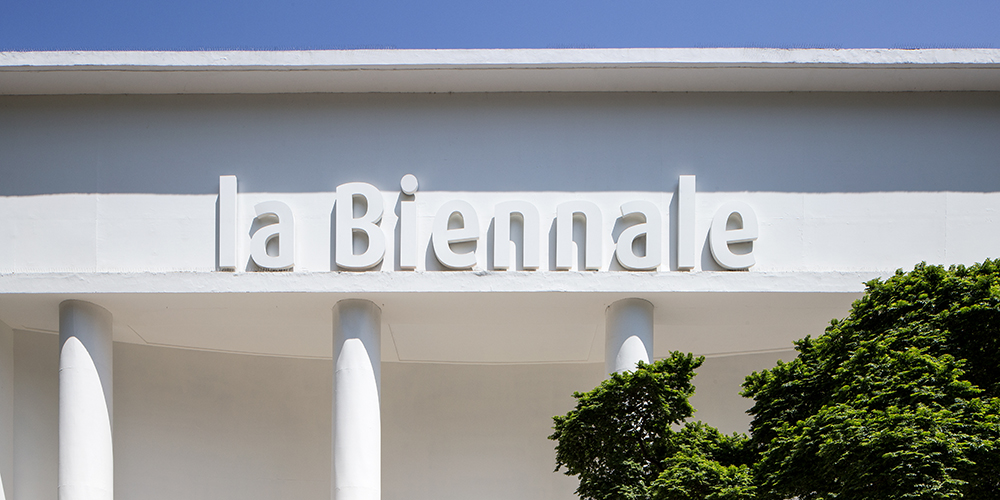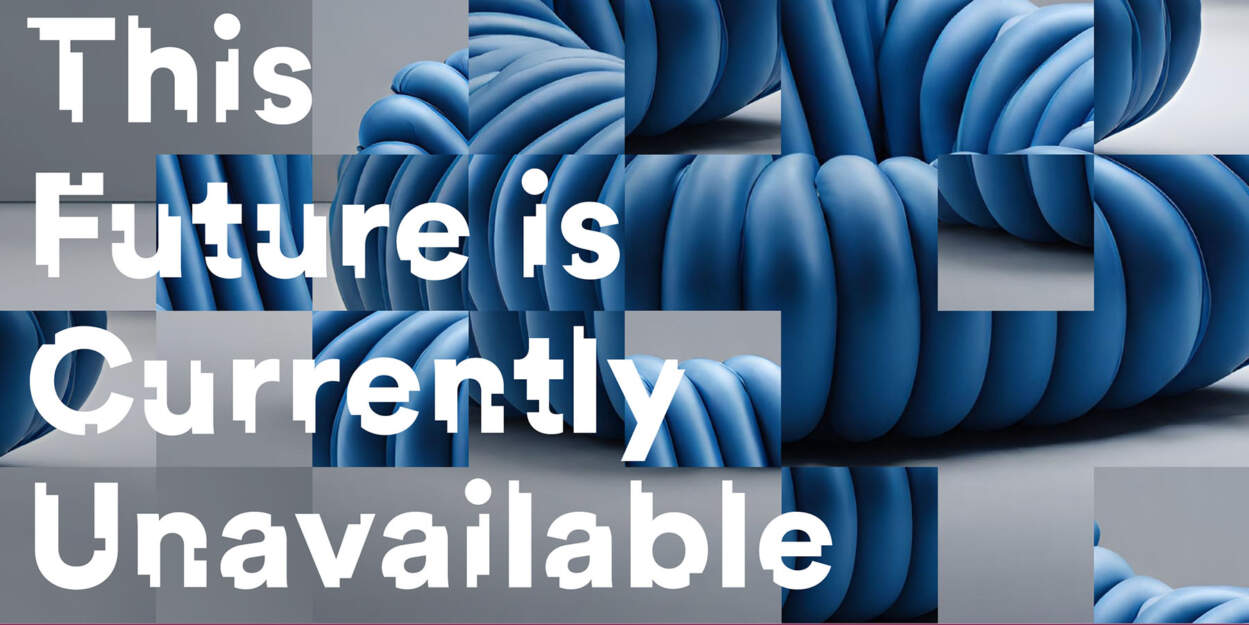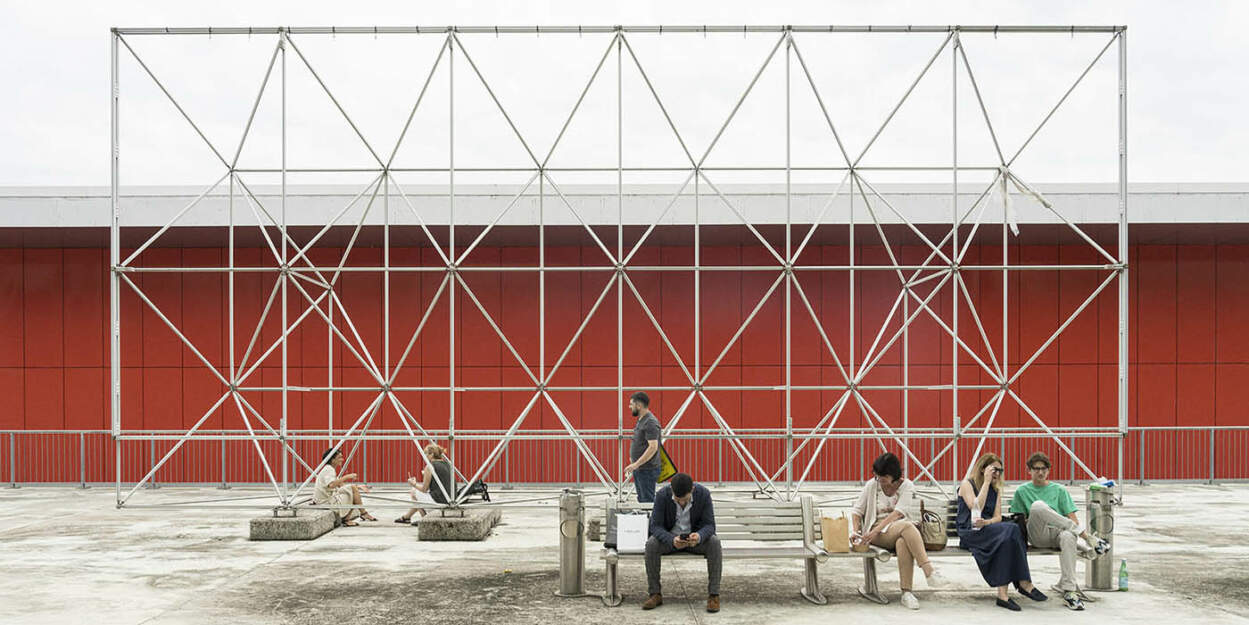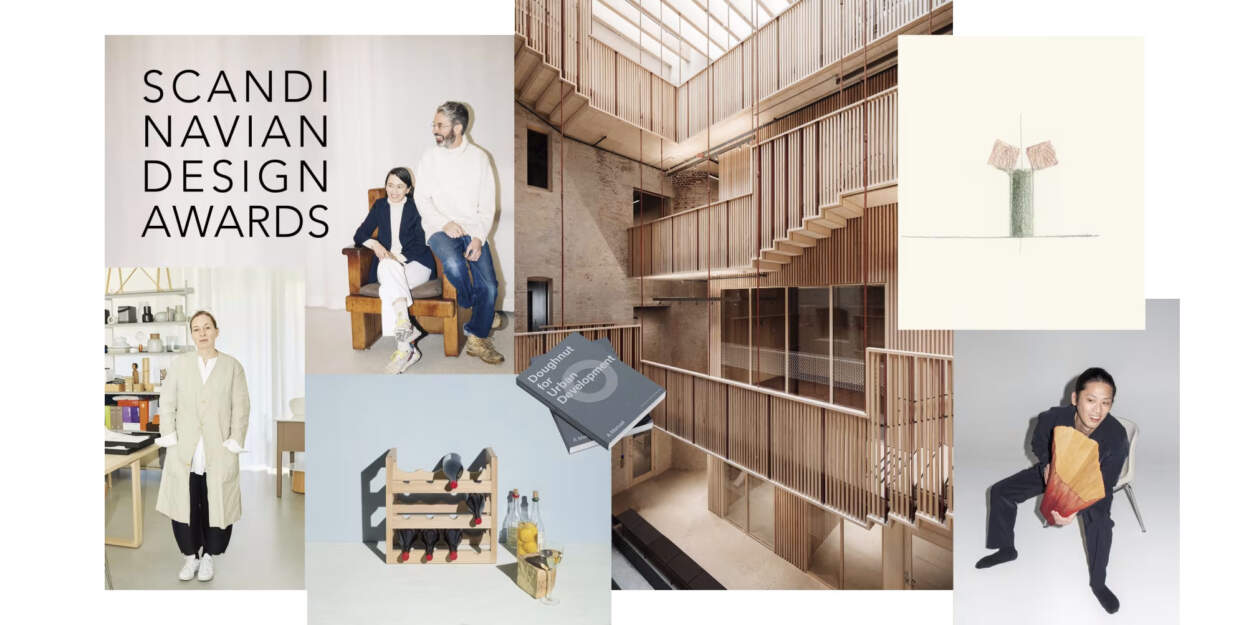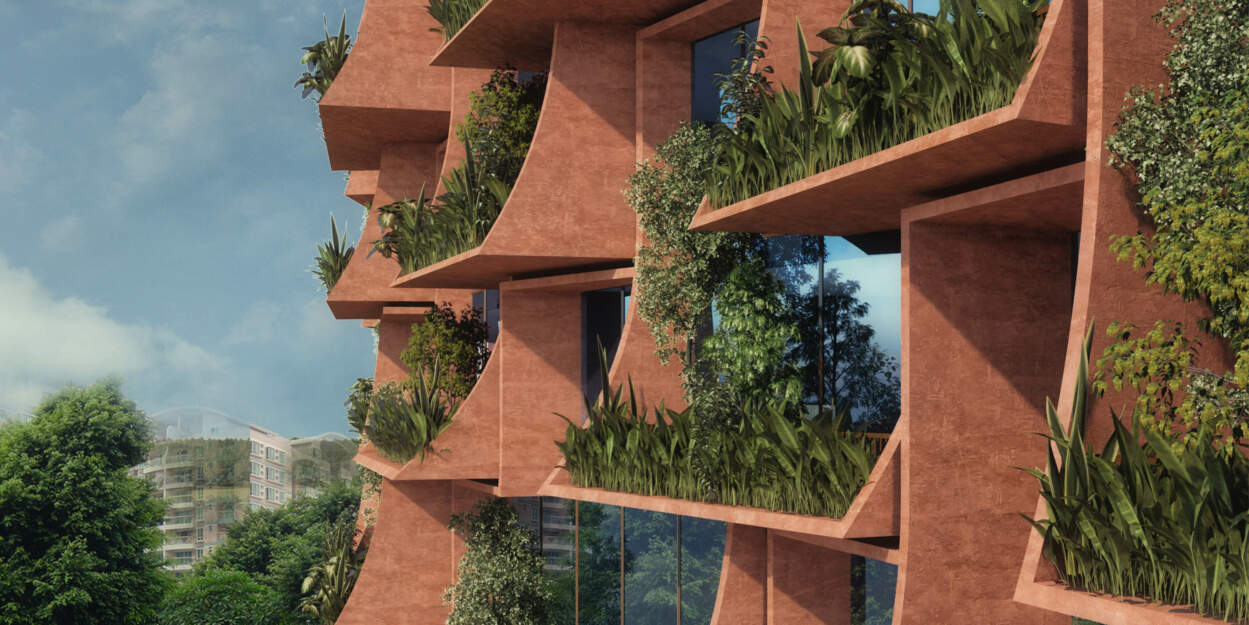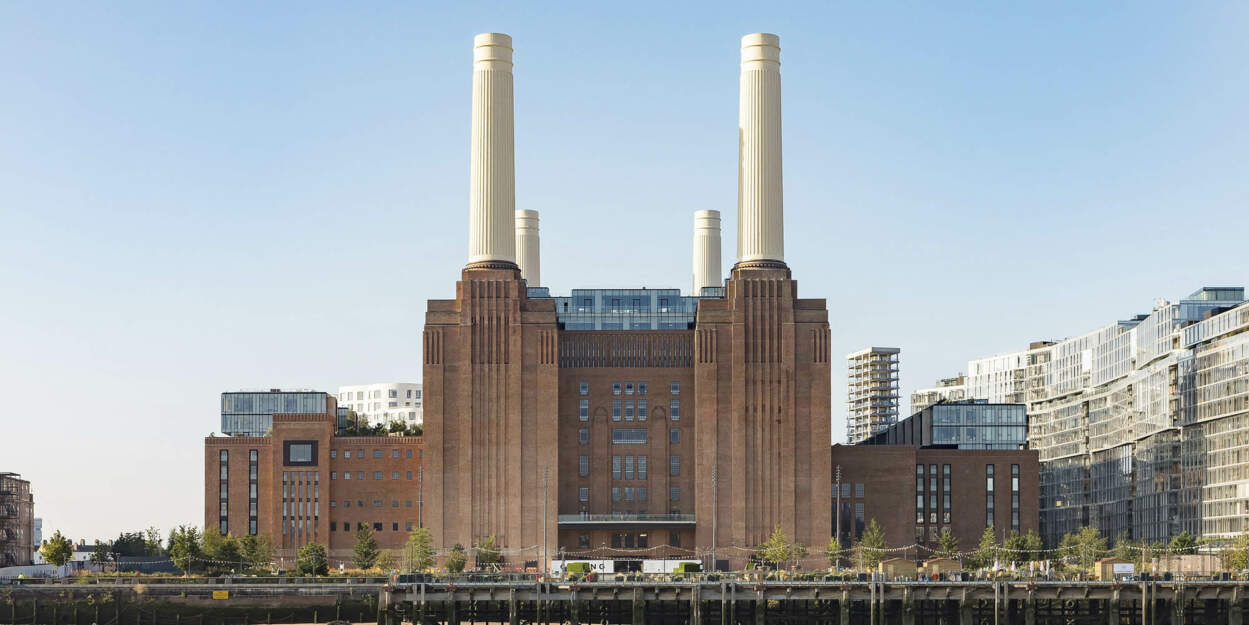The Venice Biennale of Architecture 2023, titled The Laboratory of the Future, will be open to the public from Saturday May 20 to Sunday November 26 at the Giardini and the Arsenale, and at Forte Marghera; it will be curated by Lesley Lokko and organised by La Biennale di Venezia. The pre-opening will take place on May 18 and 19, the awards ceremony and inauguration will be held on Saturday 20 May 2023.
La Biennale di Venezia is working concretely towards the crucial goal of fighting climate change, by promoting a more sustainable model for the design, installation and operation of all its events.
In 2022 La Biennale obtained this certification for all the events it held that year. This was made possible by carefully collecting the data on the causes of CO2 emissions generated by the events themselves, and on the adoption of consequent measures. The entire process for achieving carbon neutrality, conducted in compliance with the international standard PAS2060, was certified by RINA.
For all the events, the most important component of the overall carbon footprint involves the mobility of the visitors. In this sense, La Biennale will engage again in 2023 in a communication campaign to raise the awareness of the participating public, starting with the 18th International Architecture Exhibition, which will be the first major exhibition in this discipline to test in the field the process to achieve carbon neutrality, while furthermore reflecting upon the themes of decolonisation and decarbonisation.
“Central to all the projects is the primacy and potency of one tool: the imagination. It is impossible to build a better world if one cannot first imagine it” said Lesley Lokko, Curator of the Venice Biennale of Architecture 2023.
The Laboratory of the Future, explains the curator, begins with the exhibition in the Central Pavilion in the Giardini, where 16 practices who represent a distilled force majeure of African and Diasporic architectural production have been gathered. The exposition continues in the Arsenale complex, where participants in the Dangerous Liaisons section – also represented in Forte Marghera in Mestre – rub shoulders with the Curator's Special Projects, for the first time a category that is as large as the others.
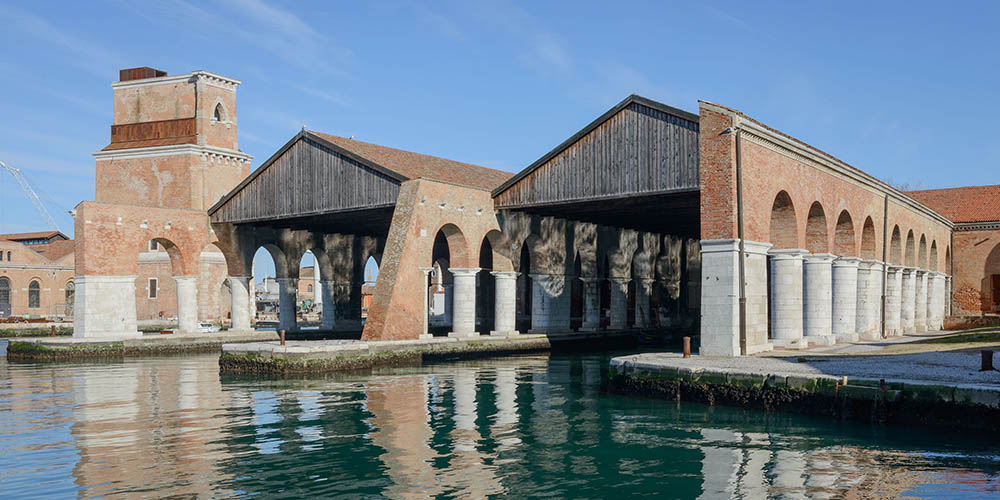
Photography: Andrea Avezzù | Courtesy of La Biennale di Venezia
Threaded through and amongst the works in both venues are young African and Diasporan practitioners, called Guests from the Future, whose work engages directly with the twin themes of this exhibition, decolonisation and decarbonisation, providing a snapshot, a glimpse of future practices and ways of seeing and being in the world.
Curators of Venice Biennale of Architecture 2023 have deliberately chosen to frame participants as ‘practitioners' and not ‘architects' and/or ‘urbanists', ‘designers', ‘landscape architects', ‘engineers' or ‘academics' because they want to affirm that the rich, complex conditions of both Africa and a rapidly hybridising world call for a different and broader understanding of the term ‘architect'.
The Venice Biennale of Architecture 2023 in numbers.
The Laboratory of the Future is an exhibition in six parts. It includes 89 participants, over half of whom are from Africa or the African Diaspora. The gender balance is 50/50, and the average age of all participants is 43, dropping to 37 in the Curator's Special Projects, where the youngest is 24.
46% of participants count education as a form of practice, and, for the first time ever, nearly half of participants are from sole or individual practices of five people or less. Across all the parts of The Laboratory of the Future, over 70% of exhibits are by practices run by an individual or a very small team.
63 National Participations will organize their exhibitions in the historic Pavilions at the Giardini (27), at the Arsenale (22) and in the city centre of Venice (14). Niger participates for the first time at the Biennale Architettura; Panama participates for the first time with its own pavilion and has already participated in previous editions as part of the I.I.L.A. (Italo-Latin American International Organization). The Holy See returns to the Biennale Architettura, participating with its own Pavilion on the Island of San Giorgio Maggiore (it participated in the Biennale Architettura for the first time in 2018).
The Italian Pavilion at the Tese delle Vergini in the Arsenale, sponsored and promoted by the Directorate-General for Contemporary Creativity of the Ministry of Culture, is curated by the Fosbury Architecture collective, consisting of Giacomo Ardesio, Alessandro Bonizzoni, Nicola Campri, Veronica Caprino, Claudia Mainardi. The title of the exhibition is “Spaziale: Everyone Belongs to Everyone Else“
The 2023 Venice Architecture Biennale list of participants
Force Majeure (Giardini, Central Pavilion)
1. Adjaye Associates (Accra, Ghana; London, UK; New York, USA) Sir David Adjaye OBE (b. Dar es Salaam, Tanzania, 1966) 2. atelier masōmī (Niamey, Niger) Mariam Issoufou Kamara (b. St Etienne, France, 1979) 3. Basis (London, UK; Los Angeles, New York, USA) Kibwe Tavares (b. London, UK, 1983); Zenna Tavares (b. London, UK, 1986) 4. Cave_bureau (Nairobi, Kenya) Kabage Karanja (b. Nairobi, Kenya, 1979); Stella Mutegi (b. Nairobi, Kenya, 1979) 5. Hood Design Studio (Oakland, USA) Walter Hood (b. Fort Bragg, USA, 1958); Alma Du Solier (b. Monterrey, Mexico, 1972); Michael DeGregorio (b. Philadelphia, USA, 1985); Paul Peters (b. New Westminster, Canada, 1981) 6. Ibrahim Mahama (Tamale, Ghana) b. Tamale, Ghana, 1987 7. Kéré Architecture (Berlin, Germany) Diébédo Francis Kéré (b. Gando, Burkina Faso, 1965) 8. Koffi & Diabaté Architectes (Abidjan, Ivory Coast) Guillaume Koffi (b. Gagnoa, Ivory Coast; 1959); Issa Diabaté (b. Abidjan, Ivory Coast, 1969) 9. MASS Design Group (Boston, USA; Kigali, Rwanda) Alan Ricks (b. USA,1983); Christian Benimana (b. Rwanda, 1982); Patricia Gruits (b. USA, 1982) 10. Olalekan Jeyifous (Brooklyn, USA) b. Ibadan, Nigeria, 1977 11. SOFTLAB@PSU (State College, USA) Felecia Davis (b. Michigan, USA, 1959) 12. Studio Sean Canty (Boston, USA) Sean Canty (b. Philadelphia, USA, 1987) 13. Sumayya Vally and Moad Musbahi (Johannesburg, Republic of South Africa,London, UK; Tripoli, Lybia/New York, USA) Sumayya Vally (b. Pretoria, Republic of South Africa, 1990); Moad Musbahi 14. Thandi Loewenson (London, UK) b.Harare, Zimbabwe, 1989 15. Theaster Gates Studio (Chicago, USA) Theaster Gates (b. Chicago, USA, 1973) 16. urban american city (urbanAC) (New York, USA) Toni L. Griffin (b. Chicago, USA, 1964)
Force Majeure – Outdoor Installation (Arsenale)
17.Adjaye Associates (Accra, Ghana; London, UK; New York, USA) Sir David Adjaye OBE (b. Dar es Salaam, Tanzania, 1966)
Dangerous Liaisons (Arsenale, Corderie)
18. AD—WO (New York, USA)Emanuel Admassu (b. Addis Ababa, Ethiopia, 1983); Jen Wood (b. Melbourne, Australia, 1984) 19. AMAA Collaborative Architecture Office For Research And Development (Venice, Italy) Marcello Galiotto (b. Arzignano, Italy, 1986); Alessandra Rampazzo (b. Mirano, Italy, 1986) 20. Andrés Jaque / Office for Political Innovation (New York, USA; Madrid, Spain) Andrés Jaque (b. Madrid, Spain, 1971) 21. Paulo Tavares / autonoma (Brasília, Brazil) Paulo Tavares (b. Campinas, Brazil, 1985) 22. BDR bureau and carton123 architecten (Turin, Italy; Brussels, Belgium)Simona Della Rocca (b. Moncalieri, Italy, 1985); Alberto Bottero (b. Cuneo, Italy, 1984); Els Van Meerbeek (b. Leuven, Belgium, 1974); Joost Raes (b. Leuven, Belgium, 1979) 23. DAAR – Alessandro Petti and Sandi Hilal (Stockholm; Bethlehem) 24. David Wengrow and Eyal Weizman with Forensic Architecture and Nebelivka project (London, UK)Eyal Weizman (b. Haifa, Israel, 1970); David Wengrow (b. UK, 1972) 25. Dream The Combine (Ithaca, Minneapolis, USA)Jennifer Newsom (b. Norwich, USA, 1979); Tom Carruthers (b. Vancouver, Canada, 1978) 26. Dualchas (Isle of Skye, Glasgow, UK) Neil Stephen (b. Glasgow, UK, 1969); Alasdair Stephen (b. Glasgow, UK, 1969); Rory Flyn (b. Inverness, UK, 1978) 27. Estudio A0 (Quito, Ecuador) Ana María Durán Calisto (b. Quito, Ecuador, 1971); Jaskran Kalirai (b. Derby, UK, 1974) 28. Flores & Prats Arquitectos (Barcelona, Spain) Eva Prats (b. Barcelona, Spain, 1965); Ricardo Flores (b. Buenos Aires, Argentina, 1965) 29. Gbolade Design Studio (London, UK) Tara Gbolade (b. Kaduna, Nigeria, 1985); Lanre Gbolade (b. Ota, Nigeria, 1985) 30. Gloria Cabral and Sammy Baloji (Guarda do Embau, Brazil; Brussels, Belgium) Gloria Cabral (b. São Paulo, Brazil, 1982); Sammy Baloji (b. Lubumbashi, Democratic Republic of the Congo, 1978); with Cécile Fromont (New Haven, USA) b. Schoelcher, Martinique, 1980 31. Grandeza Studio (Madrid, Spain; Sydney, Australia) Amaia Sánchez-Velasco (b. Salamanca, Spain, 1985); Jorge Valiente Oriol (b. Madrid, Spain, 1984); Gonzalo Valiente Oriol (b. Madrid, Spain, 1982) 32. Huda Tayob (Cape Town, Republic of South Africa; Manchester, UK) b. Cape Town, Republic of South Africa, 1986 33. Kate Otten Architects (Johannesburg, Republic of South Africa) Kate Otten (b. Durban, Republic of South Africa, 1964) 34. Killing Architects (Rotterdam, the Netherlands) Alison Killing (b. Newcastle upon Tyne, UK, 1979) 35. Le laboratoire d'architecture (Geneva, Switzerland) Vanessa Lacaille (b. Paris, France, 1980); Mounir Ayoub (b. Tunis, Tunisia, 1980) 36. Liam Young (Los Angeles, USA) b. Australia, 1979 37. Low Design Office (Austin, USA; Tema, Ghana) Ryan Bollom (b. Spring, USA, 1979); DK Osseo-Asare (b. State College, USA, 1980) 38. MMA Design Studio (Johannesburg, Republic of South Africa) Mphethi Morojele (b. Maseru, Lesotho, 1963) 39. Neri&Hu Design & Research Office (Shanghai, People's Republic of China) Lyndon Neri / Guo Xi-En (b. Ozamiz, Philippines, 1965); Rossana Hu / Hu Ru-Shan (n. Kaohsiung, China, 1968) 40. Office 24-7 Architecture and Lemon Pebble Architects (Johannesburg, Republic of South Africa) Nabeel Essa (b. Polokwane, Republic of South Africa, 1971); Tanzeem Razak (b. Benoni, Republic of South Africa, 1973) 41. orizzontale (Rome, Italy) Nasrin Mohiti Asli (b. Roma, Italy, 1987); Margherita Manfra (b. Roma, Italy, 1985); Giuseppe Grant (b. Caserta, Italy, 1987); Roberto Pantaleoni (b. Roma, Italy, 1987); Stefano Ragazzo (b. Roma, Italy, 1987); Juan López Cano (b. Cardeña, Spain, 1981); Jacopo Ammendola (b. Fiesole, Italy, 1983) 42. Rahul Mehrotra with Ranjit Hoskote (Mumbai, India, Boston, USA) Rahul Mehrotra (b. New Delhi, India, 1959); Ranjit Hoskote (b. Mumbai, India, 1969) 43. SCAPE Landscape Architecture (New York, USA) Kate Orff (b. Silver Spring, USA, 1971) 44. Stephanie Hankey, Michael Uwemedimo and Jordan Weber (Berlin, Germany and internationally; Port Harcourt, Nigeria and internationally; New York City, Boston, St. Louis, Minneapolis, USA) Stephanie Hankey (b. Manchester, UK, 1973); Michael Uwemedimo (b. Calabar, Nigeria, 1972); Jordan Weber (b. Des Moines, USA, 1985) 45. Studio Barnes (Miami, USA) Germane Barnes (b. Chicago, USA, 1985) 46. Suzanne Dhaliwal (Croatia; UK) b. Birmingham, UK, 1982 47. Sweet Water Foundation (Chicago, USA) Emmanuel Pratt (b. Richmond, USA, 1977) 48. The Funambulist (Paris, France) Léopold Lambert (b. Paris, France, 1985) 49. Twenty Nine studio (Brussels, Belgium) Sammy Baloji (b. Lubumbashi, Democratic Republic of the Congo, 1978) 50. Ursula Biemann (Zurich, Switzerland and internationally) b. Zurich, Switzerland, 1955 51. White Arkitekter (Sweden) Alexandra Hagen (b. Malmö, Sweden, 1972) 52. Wolff Architects (Cape Town, Republic of South Africa) Ilze Wolff (b. Cape Town, Republic of South Africa, 1980); Heinrich Wolff (b. Johannesburg, Republic of South Africa, 1970) 53. ZAO/standardarchitecture (Beijing, People's Republic of China) Zhang Ke (b. Anhui, People's Republic of China, 1970) Dangerous Liaisons – Outdoor Installation (Arsenale) 54. Studio of Serge Attukwei Clottey (Accra, Ghana) Serge Attukwei Clottey (b. Accra, Ghana, 1985)
Dangerous Liaisons – Outdoor Installation (Forte Marghera)
55. Sweet Water Foundation (Chicago, USA) Emmanuel Pratt (b. Richmond, USA, 1977
___
Traditionally the Curators project is accompanied by Collateral events organized in several locations around the city of Venice, they offer a wide range of contributions and participations that enrich the diversity of voices that characterizes the Exhibition, and other Educational activities as lectures, panel discussions, films, performances, and workshops, addressed to the audience of visitors, universities, young people, and children, from schools at all levels.
The Archive of the Future
Like Hemingway, who famously ended each day's work mid-sentence, The Laboratory of the Future closes with an open-ended question: what next? The Archive of the Future is a visual account of the processes, drawings, discussions, ideas, conversations, old arguments, propositions and new understandings that collectively brought this exhibition to life.
The Laboratory of the Future is not didactic. It does not confirm directions, offer solutions, or deliver lessons. Instead, it is intended as a kind of rupture, an agent of change, where the exchange between participant, exhibit and visitor is not passive or predetermined.
At the Venice Biennale of Architecture 2023 the exchange is intended as reciprocal, a form of glorious, unpredictable exchange, each transformed by the encounter, each emboldened to go forward into another future.
________
Discover more on the Venice Biennale of Architecture 2023 official website: www.labiennale.org
Official hashtags: #BiennaleArchitettura2023 #TheLaboratoryOfTheFuture
Cover image: Francesco Galli


